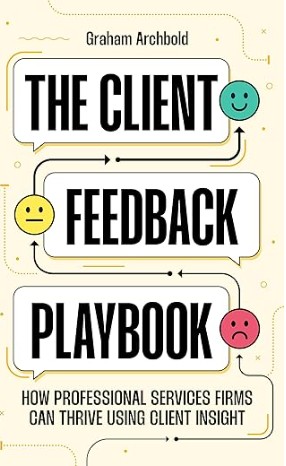
At the recent MBL Change management workshop https://www.mblseminars.com/Outline/Tackling-Change-Management—A-Workshop-for-Professional-Practices/8417 we covered a lot of topics but the one that generated most interest was employee engagement. Change management and Employee engagement is particularly important in professional service firms where highly-skilled people are constantly on the front line with clients so it has a direct impact on service quality and the client experience. Every employee is an advocate or ambassador for your firm. But employee engagement is also important for motivating and retaining people – and supporting them through change and transition whether personal or organisational.
David MacLeod defines employee engagement in his 2009 report to UK government as: “A workplace approach designed to ensure that employees are committed to their organisation’s goals and values, motivated to contribute to organisational success, and are able at the same time to enhance their own sense of well-being.”
His shorter version is “How we create the conditions in which employees offer more of their capability and potential”.
Recent Gallup research shows low levels of employee engagement are common – with the UK workforce achieved an engagement score of 17%.
Clarity in your vision, mission and values
The owners of a business need to be clear on what they want to achieve from a personal and business perspective. This might be expressed as a mission (a bold, compelling, audacious goal), a purpose (the fundamental reason for the business’ existence) or values (guiding business principles or philosophy). It is important to have a compelling vision to drive forward a change programme – it features in all of the change management models we explored on the course.
Workshops for stakeholders and employees need to do more than present the thinking and conclusions of the business owners. Values emerge from all the behaviours in an organisation – and are part of its culture. Employees need to be a part of the vision and values development process so that they can properly engage in understanding how they are relevant to them as individuals. They need to participate in the co-creation of the vision and values. Otherwise, it’s an uphill struggle to get buy-in and commitment afterwards.
Benefits of employee engagement
There are many reasons why organisations invest in employee engagement programmes – but to summarise the main ones:
- Alignment – Employee engagement ensures that all staff understand the business’s mission and can play their part in achieving its success. An HBR report found that only 5% employees understand their company’s strategy.
- Commitment – Employee engagement is likely to increase your employee’s commitment to the organisation. Emotional commitment is four times more powerful than rational commitment (Campbell MacPherson in “The Change Catalyst”)
- Productivity and profit – Companies with high employee commitment deliver two to three times the total shareholder return than companies with low employee commitment. A survey by Gallup in 2012 found that businesses with engagement scores in the top quartile averaged 12 higher profitability. The MacLeod report said that it can add as much as 40% to productivity and a real source of performance improvement. So employee engagement can be a source of significant competitive advantage.
- Change – 88% of change initiatives fail and a lack of effective internal communication are two of the main four causes. Employee engagement can prevent resistance and fear and generate ownership.
- Motivation – Employee engagement increases motivation. See CIPD for more information https://www.cipd.co.uk/knowledge/fundamentals/relations/engagement/factsheet
- Cohesion – In large organisations where there are complex structures, staff may feel as if they are in silos and disconnected from other teams. Employee engagement can play a role in generating a sense of cohesion and integration.
- Well-being – People are less likely to experience stress where they feel involved and that their work is valued and meaningful (i.e. connected to the purpose of the organisation). Stress is less likely also where people perceive that they have a degree of control over their work.
- Client Experience Management (CEM or CX) – Engaged employees are more empowered and thus more likely to go beyond their job roles to assist a colleague or a client. They are also more effective advocates and ambassadors for the business and can help promote a positive image and generate recommendations and referrals. This is particularly important for those reliant on cross-selling.
Organisations where employees showed high levels of engagement demonstrated a greater ability for innovation, had higher retention rates, less absenteeism and fewer work-related accidents. Engaged staff are more likely to take advantage of new opportunities, adapt readily to new circumstances, make suggestions for improvements and put forward new ideas.
A feeling of positivity in the workplace is linked to the “‘progress principle”’ (Professor Teresa Amabile of Harvard Business School) – the high correlation between making progress and feeling good at work
How to achieve employee engagement
There are many different ways to achieve employee engagement but a recommended process is as follows:
- Assess the current situation
- Develop a tailored organisational strategy
- Set a clear vision and strategy and create a shared sense of purpose
- Recognise the role of line managers
- Make effective communication a priority
- Listen to your employees
- Develop relationships based on trust (see http://kimtasso.com/trust-better-business-relationships/)
- Review reward and recognition systems
- Provide learning and development opportunities
- Build a culture of engagement
Internal communication
Employee engagement is primarily about communication. Communication and internal relationships are covered in my latest book Better Business Relationships http://kimtasso.com/publications/better-business-relationships/
During the course of the discussion, we considered the pros and cons of different ways in which to engage with people. Stakeholder analysis (a type of internal segmentation analysis) was used to identify the different groups and to adjust the engagement programmes accordingly. But it was noted that it was as much about management listening as it is about speaking or promoting messages.
While face-to-face communication is ideal as it allows the two way flow of ideas, there are many other methods – including digital channels such as intranets and social media. Further information about internal communication is covered here: http://kimtasso.com/internal-communication-why-how-and-what/
Surveys
Many organisations start an employee engagement programme with a survey. Some of the things you might want to survey include:
- Organisational Affiliation
- Appreciation and Respect
- Autonomy and Influence
- Opportunities for Growth
- Work-life Balance
- Reward Culture
- Quality of Relationships
- Work Culture
- Work Environment
- Communication
- Leadership
- Quality of Supervision
These days, there are lots of digital tools to help you design and conduct employee engagement surveys. For example: The Happiness Index and PeakOn (which has a professional services version).
Other employee engagement activities
Other employee engagement activities include:
- Shared activities – Some firms organise charity-raising sports and adventure activities where junior, senior and even former employees come together to meet a challenge
- Worker Councils – where management consults nominated representatives about planned changes
- Committees – Some organisations have formal committees with responsibility for reviewing and monitoring employee engagement
- Panels and Focus Groups – Here less formal groups of staff are involved in discussions about major strategies and planned changes
- Shadow boards – Where more junior people shadow the decision-making process of the main Board. This is also a valuable tool in developing future leaders
- Workshops – Occasional training sessions and other group activities where specific topics are discussed and the feedback is captured
- Steering Groups – Often there will be representatives of different types of staff on the steering groups of major projects
- Team meetings – There will usually be particular agenda items to both inform and obtain feedback on major developments from staff throughout the organisation. Team days may be arranged that serve both team bonding and organisational commitment purposes
- Buddies and mentors – Senior people may offer to provide informal support to younger and/or newer members of the organisation. Reverse mentoring – where senior people seek information and perspective from younger and newer members of the organisation – is increasingly popular
Some firms have achieved high levels of employee engagement by following the lead of the John Lewis Partnership. In early 2019, Hodge Jones & Allan became the first law firm to become entirely employee owned with the introduction of an Employee Ownership Trust https://www.hja.net/press-releases/major-law-firm-becomes-first-to-be-entirely-owned-by-its-employees/
There’s a helpful checklist on employee engagement at the Chartered Management Institute (CMI) https://www.managers.org.uk/knowledge-bank/employee-engagement
There are also helpful resources here: https://www.glintinc.com/resource-center/ including a report on “The State of Employee Engagement” in 2018 https://www.glintinc.com/resource/the-state-of-employee-engagement-in-2018/
Engage for Success https://engageforsuccess.org/ is a UK voluntary organisation supporting employee engagement. It was established in 2011 following the Government-backed Employee Engagement Task Force chaired by David MacLeod and Nita Clarke.
Communicating with former employees
Many professional service firms extend beyond existing employee engagement and have structured programmes for managing communications with former employees. These alumni programmes are critical in maintaining relationships with those who are in a position to act as sponsors and to provide referrals and recommendations.
The largest law firms – such as Allen & Overy and Herbert Smith Freehills as well as the largest accountancy practices (e.g. Deloitte) have made significant investments in their alumni programmes. For example, Allen & Overy has a dedicated web site and produces a year book of critical updates. As well as being a component of the Employee Value Proposition (EVP) it also serves as an effective recruitment tool with a 16% returner rate (compared to the industry average of 10%).
Who is responsible for employee engagement?
Most people accept that the leadership team is ultimately responsible for employee engagement – people will follow a visionary leader.
In some organisations, employee engagement is the responsibility of a human resources (HR) or an internal communications department. Sometimes the marketing communications team is responsible for employee engagement. But anyone who is embarking on a change management project will need to understand it to achieve buy-in and results.
From a professional perspective, many human resource people are employee engagement experts. Their professional association is the Chartered Institute of Personnel and Development (CIPD which offers helpful fact sheets: https://www.cipd.co.uk/knowledge/fundamentals/relations/engagement/factsheet
The Association for Business Psychologists (ABP) is another organisation that offers professionals in employee engagement https://www.theabp.org.uk/home.aspx
“Business Psychology is the study and practice of improving working life. It combines an understanding of the science of human behaviour with experience of the world of work to attain effective and sustainable performance for both individuals and organisations” (ABP)
The ABP has the following categories of activity:
- Selection and assessment
- Organisational development
- Coaching
- Leadership development
- Learning and development
- Talent management
- Employee engagement
- Safe and user-friendly work environments
- Performance management and appraisal
- Culture
- Health and well-being at work
- Psychometric testing
Related topics – Internal communication and buy-in
Internal communication and buy-in are critical for employee engagement:
Related topics – change management
There are many posts on different aspects of change management, for example:








